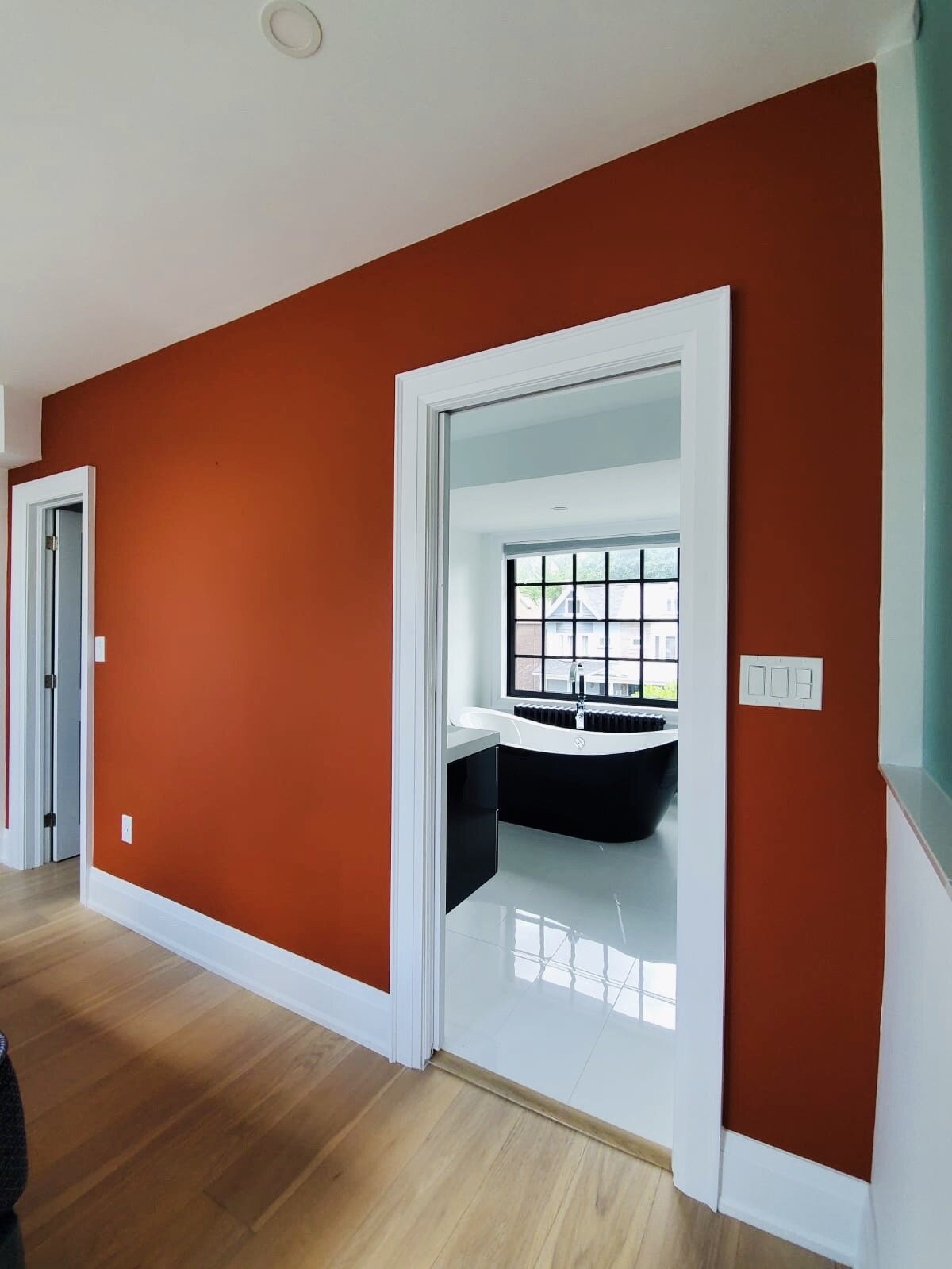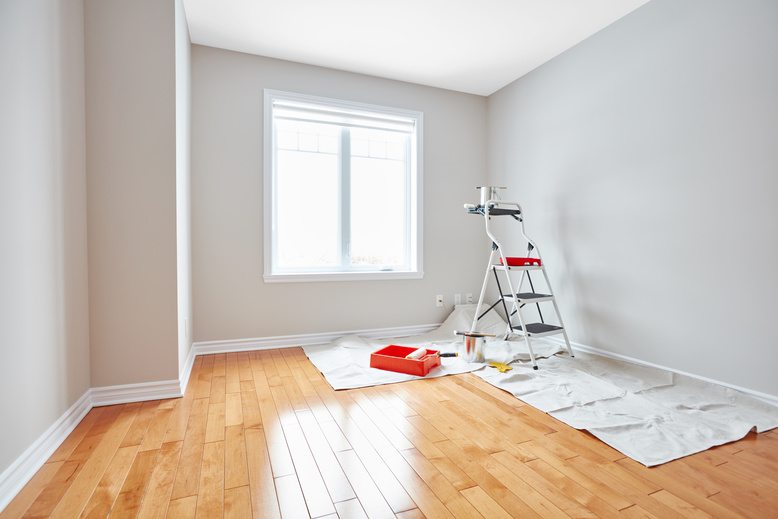Renew Your Area With Inside and Exterior Home Paint
Renewing your area via both exterior and interior home paint is a strategic technique to boosting your home's general atmosphere and market value. The ideal application of color can not only reflect your personal taste however likewise produce a much more inviting environment. Moreover, recognizing the long-term advantages of quality paints goes beyond looks; it entails factors to consider of sturdiness and upkeep. As we explore the nuances of color selection and application strategies, you might locate that the change of your living area is much more achievable than you at first assumed.
Advantages of Residence Paint
Changing a home's appearance via painting not only enhances its visual charm yet likewise gives substantial functional benefits. A fresh layer of paint acts as a safety obstacle against ecological aspects, such as dampness and UV rays, which can bring about deterioration with time. This protective layer is specifically crucial for exterior surface areas that encounter the impact of the weather.
Moreover, indoor painting can boost air high quality by utilizing low-VOC or zero-VOC paints, which lower dangerous emissions and advertise a much healthier living environment. This is particularly helpful for families with kids or people with respiratory issues.
Additionally, residence painting can increase building value. A properly maintained home with a modern shade palette draws in possible buyers, making it a sound investment for property owners looking to offer. Normal paint likewise reflects a sense of care and interest to information, boosting the overall marketability of the property.
Lastly, painting enables home owners to express their personal style and create an inviting atmosphere. Whether updating out-of-date colors or rejuvenating faded wall surfaces, painting can invigorate a room, making it really feel new and inviting. Overall, the benefits of house painting are both visual and practical, making it an essential aspect of home maintenance.

Choosing the Right Color Styles
Selecting the best shades for both indoor and outside residence paint is an important element of improving a home's aesthetic allure and worth. When taking into consideration outside shades, it is crucial to take into account the surrounding environment, neighborhood looks, and any type of house owner organization standards.
For indoor rooms, shades ought to be picked based upon the feature of each space. Softer shades promote harmony in rooms, while lively colors can energize living areas or game rooms. Florentina’s Painting LLC Interior Painting. Furthermore, think about exactly how natural light communicates with colors throughout the day; a color may show up various under varying lights problems
Furthermore, it's advantageous to create a natural color combination that moves throughout the home, linking different spaces while enabling specific expression in each space. Utilizing shade examples and samples can help in picturing the final end result, ensuring that your selections line up with your vision and improve both the interior and exterior appeal of your home.
Inside Painting Techniques
When it concerns implementing an effective interior painting job, recognizing various methods is crucial for accomplishing a sleek and professional finish. One essential strategy is the "cut-in" method, which involves utilizing a brush to repaint sides and edges before rolling the walls. This develops tidy lines and protects against roller marks.
Another effective method is using different roller nap lengths. A shorter snooze is perfect for smooth surface areas, while a much longer snooze can aid cover textured walls, making certain an also application of paint. Additionally, employing a "back-rolling" technique after spraying can aid Visit Website to equally disperse paint and improve bond.
For even more detailed designs, methods such as stenciling or sponging can add depth and cost to paint 3000 sq ft house interior personality to an area. These approaches call for accuracy and method however can produce magnificent outcomes.

Last but not least, appropriate surface preparation-- consisting of cleaning, sanding, and priming-- is critical to any painting strategy. This not just guarantees better paint adherence but also lengthens the life of the surface. By mastering these indoor paint techniques, homeowners can change their spaces with self-confidence and creativity.
Outside Painting Basics
Effectively tackling an external paint job requires cautious planning and attention to information. The primary step is to choose premium paint that is specifically formulated for outdoor usage, guaranteeing durability versus the elements. Consider the climate of your area, as different paints supply varying degrees of dampness resistance, UV protection, and temperature level adaptability.
Next, proper surface prep work is important. Clean surface areas completely to remove dirt, mold and mildew, and peeling off paint. Repair any problems, such as fractures or openings, to create a smooth substrate for painting. Priming is often advised, particularly for bare or formerly unpainted surface areas, as it boosts attachment and boosts the paint's longevity.
Picking the right tools is equally crucial. Spend in high quality brushes, rollers, and sprayers to achieve a specialist surface. Take notice of the application technique; working in workable areas and using also layers will certainly generate optimal outcomes. Lastly, consider the timing of your project. Perfect problems consist of low moisture, moderate temperatures, and very little wind, which can impact drying times and repaint adherence. By concentrating on these fundamentals, you can make sure find a successful and visually pleasing exterior painting project.

Upkeep Tips for Longevity
Normal upkeep is essential for protecting the longevity and appearance of both exterior and interior paintwork. To ensure your paint lasts, begin with routine assessments. For exterior surfaces, check for signs of peeling, fracturing, or fading, and address these concerns promptly to avoid additional damage. Clean surfaces consistently to get rid of dust, mold, and grime, making use of a light cleaning agent and soft brush as required.
For indoor areas, keep a regular temperature level and moisture level to reduce paint wear and tear. Dirt wall surfaces and baseboards regularly and take into consideration using touch-up paints to cover minor scuffs or scrapes.
In addition, inspect and maintain caulking around doors and windows; changing used or fractured caulk will certainly stop moisture intrusion, which can compromise paint high quality. When painting, select high-grade paints that use much better sturdiness and resistance to environmental factors, making certain a longer-lasting surface.
Conclusion
In verdict, house paint offers as a powerful tool for rejuvenating both the interior and exterior of a home. Applying upkeep techniques can extend the life of the paint, protecting the financial investment made in the revitalization process.